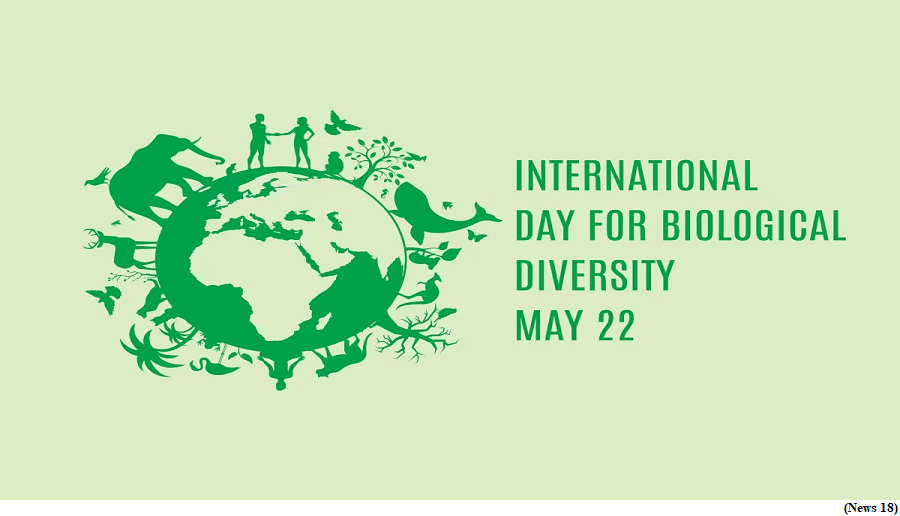Centre plans to make Chhattisgarh Gevra Asia largest coal mine (GS Paper 3, Economy)

Why in news?
- The Centre plans to increase the capacity of the Gevra Mega project in Chhattisgarh of South Eastern Coalfields (SECL) from 50 million tonne of coal production in a year to 70 million tonne, making it Asia's largest coal-producing mine in Asia.
- The Gevra Mega project is currently the largest coal producing mine in the country and is in second position in the Asia-pacific region.
Key Highlights:
- The Centre plans to make the Gevra Mega project into Asia's largest coal producing mine.
- The Gevra Mega project is owned by SECL.
- SECL is a state-owned miniratna company and Coal India is its parent company.
Background:
- Indonesia's Sangatta Mine in East Kalimantan was the largest surface coal producing mine in the Asia-Pacific region, producing approximately 49.2 million tonnes of coal and an estimated 51.4 million metric tons per annum (mmtpa) of Run-of-Mine (ROM) in 2021.
World Biodiversity Day 2023
(GS Paper 3, Environment)
Why in news?
- The International Day for Biological Diversity, celebrated on May 22 each year.
- The theme of 2023 is ‘From agreement to action: Build back biodiversity’.

History:
- The origins of the International Day for Biological Diversity can be traced back to the United Nations Conference on Environment and Development, commonly referred to as the Earth Summit, which took place in Rio de Janeiro, Brazil, in 1992.
- It was during this momentous gathering that global leaders acknowledged the pressing necessity to confront the worldwide decline of biodiversity.
- Consequently, on May 22, 1992, a substantial number of nations adopted the Convention on Biological Diversity (CBD).
What is a Biodiversity?
- Biological diversity, known as biodiversity, encompasses the wide array of life forms and the intricate patterns they create within the natural world.
- The existing biodiversity we observe today is the result of billions of years of evolutionary processes, influenced both by natural mechanisms and increasingly by human activities. It constitutes the interconnected tapestry of life, in which we are an inseparable component, and upon which we rely entirely.
- Biodiversity also encompasses the genetic variations present within each species, exemplified by the diverse crop varieties and livestock breeds. The chromosomes, genes, and DNA, which serve as the fundamental building blocks of life, contribute to the distinctiveness of individuals and species alike.
Are we on track to meet targets under global framework?
- It’s just five months since the Kunming Montreal Global Biodiversity Framework (GBF) was agreed upon and understandably, not much has been done. The framework has a total of four goals with 23 targets which have to be met by 2030.
- However, there is a need to ensure the framework does not end up like Aichi Biodiversity Targets set up in 2011. These targets, which were similar to the targets set under the GBF, were to be met by 2020, but the world collectively failed to meet any of these.
- With around one million animal and plant species threatened with extinction, immediate action is imperative. Just seven years are available to meet the targets set under GBF.
Issues with implementation:
- At the 15th Conference of Parties (COP15) in 2022, it was decided that investment is important for meeting the targets of GBF. It was decided that developed countries would provide $20 billion in international finance to developing nations by 2025 and $30 billion by 2030. This is yet to happen.
- Members states also agreed to realign their National Biodiversity Strategy and Action Plan to the GBF. However, only Spain has submitted the realigned NBSAP in 2023.
- The new plans have to be submitted to CBD secretariat before COP16 in 2024 in Türkiye. At present, the secretariat is providing support to the countries to develop the new plans. India is in the process of preparing this plan.
- The target for protecting 30 per cent of land and water was among the most controversial. According to many, this step would infringe upon the rights of the indigenous people.
- Some 16.64 per cent of land and inland water ecosystems and 7.74 per cent of coastal waters and the ocean were protected, according to the Protected Planet Report published in May 2021. More than 40 per cent of this has occurred since 2010.
- India already has 27 per cent of its land area under protection and would easily meet the target, according to the Ministry of Environment, Forest and Climate Change.
Way Forward:
- At the next meeting of the Conference of the Parties in 2024 in Türkiye, the world will take stock of the targets and commitments that have been set.



